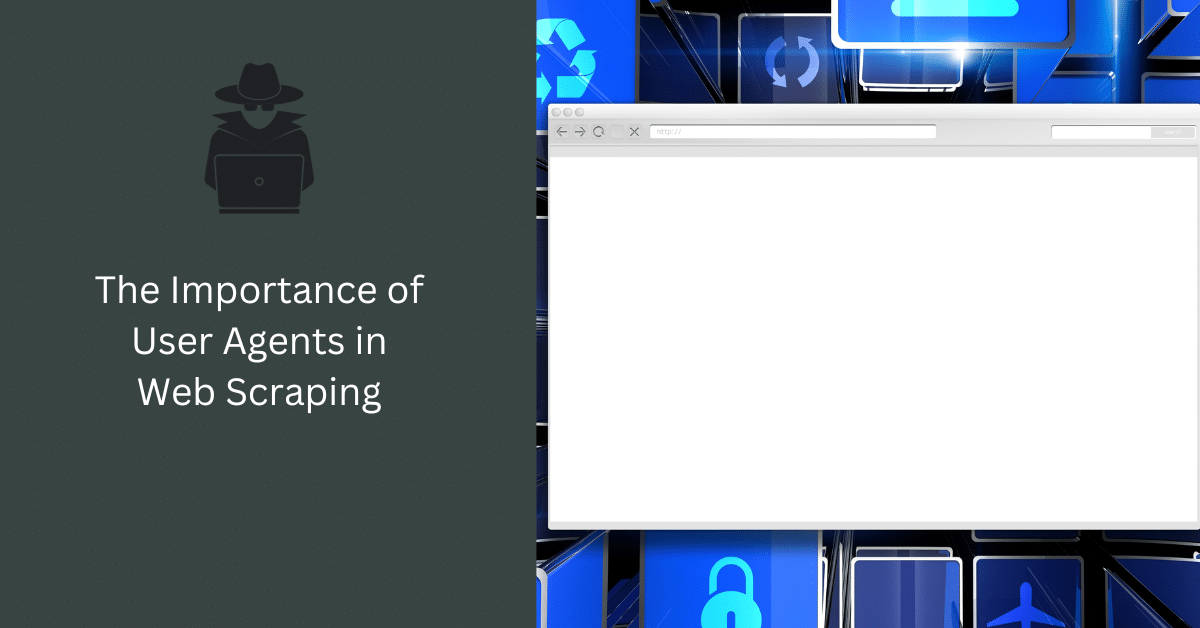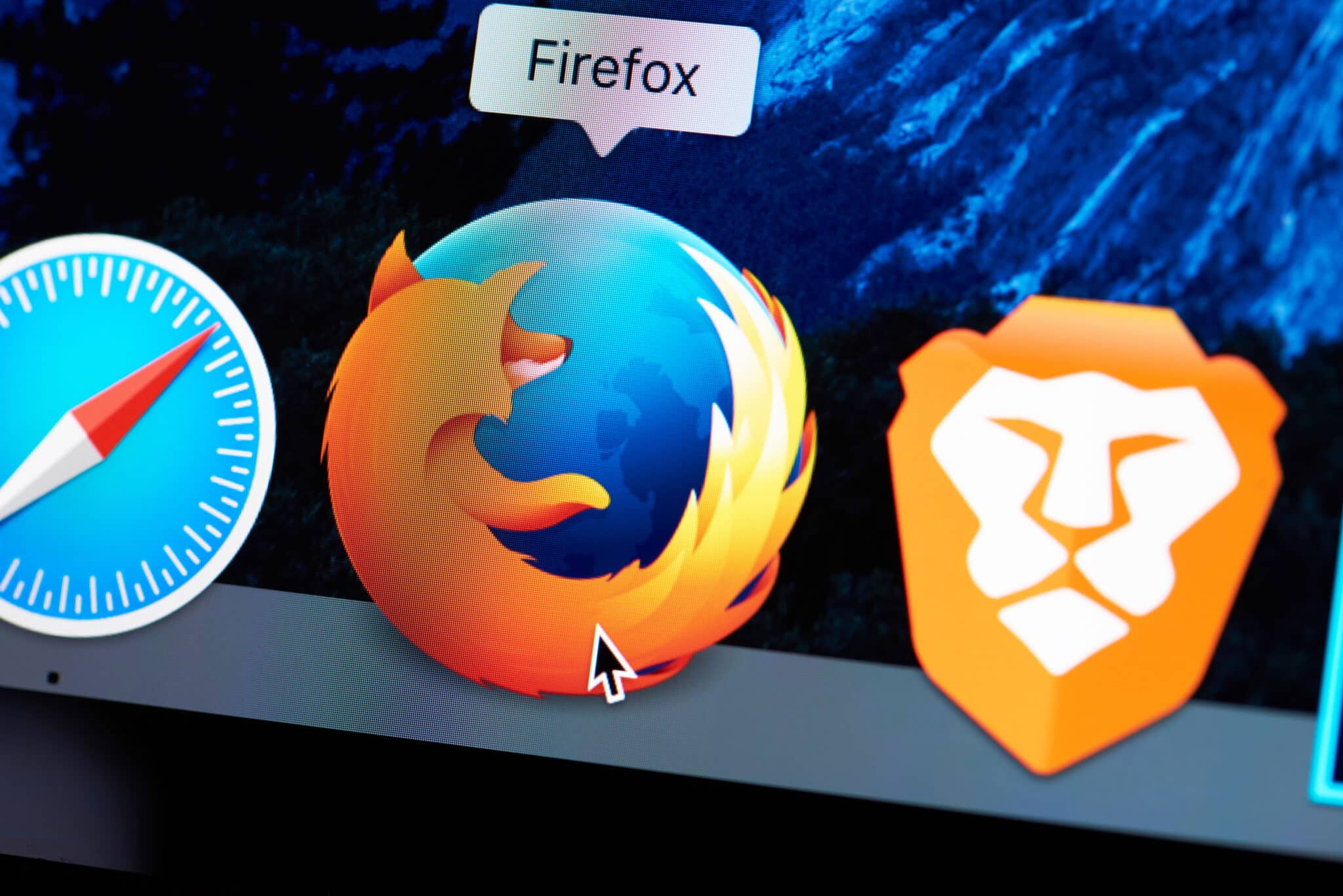
When you enter a search query in your web browser, there’s a lot happening behind the scenes that often goes unnoticed. One crucial element of this process is the user agent, a piece of information your browser sends to every website you visit.
In its simplest form, a user agent is a text string that identifies your browser to the web server. While this may sound straightforward, comprehending the intricacies of how user agents work can be a bit challenging. Whenever your browser connects to a website, it includes a user agent field in the HTTP header. The content of this field varies for each browser, resulting in distinct user agents for different browsers.
Essentially, a user agent is a way for your browser to introduce itself to the web server. It’s akin to a web browser saying, “Hello, I am a web browser” to the web server. The web server uses this information to serve content tailored to different operating systems, web pages, or web browsers.
This guide delves into the world of user agents, discussing their types and highlighting the significance of the most common user agents in the realm of web scraping.
User Agents
A user agent is software that enables the rendering, interaction, and retrieval of web content for end users. This category includes web browsers, media players, plugins, and more. The user agent family extends to consumer electronics, standalone applications, and operating system shells.
Not all software qualifies as a user agent; it must adhere to specific conditions. According to Wiki, software can be considered a primary user agent if it meets the following criteria:
- It functions as a standalone application.
- It interprets a W3C language.
- It interprets a declarative or procedural language used for user interface provisioning.
Software is categorized as a user agent extension if it either enhances the functionality of a primary user agent or is launched by one. On the other hand, software falls under the web-based user agent category if it interprets a declarative or procedural language to generate a user interface. In such cases, the interpretation can be performed by a user agent extension or a primary user agent, and user interactions must not modify the Document Object Model (DOM) of the containing document.
The Role of User Agents in Browsers

As previously mentioned, there is a user agent field within the HTTP header when a browser establishes a connection with a website. The content of this field varies from one browser to another, essentially serving as an introduction of the browser to the web server.
This information can be used by the web server for specific purposes. For example, a website may use this information to deliver mobile pages to mobile browsers or send an “upgrade” message to users with older versions of Internet Explorer.
Let’s examine the user agents of some of the most common web browsers and decipher their meanings. Here’s the user agent for Firefox on Windows 7:
Mozilla/5.0 (Windows NT 6.1; WOW64; rv:12.0) Gecko/20100101 Firefox/12.0
In this user agent, several pieces of information are conveyed to the web server. It indicates that the operating system is Windows 7, denoted by the code name Windows NT 6.1. Additionally, the “WOW64” code signifies that the browser is running on a 64-bit version of Windows, and it identifies the browser as Firefox 12.
Now, let’s examine the user agent for Internet Explorer 9:
Mozilla/5.0 (compatible; MSIE 9.0; Windows NT 6.1; WOW64; Trident/5.0)
While most of the information is self-explanatory, it may appear confusing that the user agent identifies as “Mozilla.” To fully comprehend this, let’s also consider the user agent for Chrome:
Mozilla/5.0 (Windows NT 6.1; WOW64) AppleWebKit/536.5 (KHTML, like Gecko) Chrome/19.0.1084.52 Safari/536.5
Here, Chrome seemingly identifies itself as both Safari and Mozilla. To unravel this complexity, delving into the history of browsers and user agents is essential for a complete understanding.
The Evolution of User Agents — From Simple to Complex
In the early days of web browsing, user agents were relatively straightforward. For instance, one of the earliest browsers, Mosaic, had a simple user agent: NCSA_Mosaic/2.0. When Mozilla came onto the scene, its user agent was Mozilla/1.0.
Mozilla was considered a more advanced browser due to its support for frames, a feature lacking in Mosaic. Web servers, upon receiving user agents, began sending framed pages to those containing the term “Mozilla.”
However, Internet Explorer, introduced by Microsoft, was also a modern browser that supported frames. Yet, it initially did not receive framed pages because web servers associated frames exclusively with Mozilla. To rectify this, Microsoft added “Mozilla” to the Internet Explorer user agent, along with additional information such as an Internet Explorer reference and the term “compatible.” When web servers detected “Mozilla” in the user agent, they began sending framed pages to Internet Explorer as well.
As other browsers like Chrome and Safari emerged, they adopted a similar strategy, causing the user agent of each browser to reference the names of other browsers.
Some web servers also started looking for the term “Gecko” in the user agent, which denotes the rendering engine used by Firefox. Depending on the presence of “Gecko,” web servers would deliver different pages to Gecko-based browsers compared to older ones. KHTML, the engine behind Konqueror, added phrases like “like Gecko” to its user agents to receive modern framed pages from web servers. Eventually, WebKit was introduced, which, being KHTML-based, included references like “KHTML, like Gecko” and “WebKit.”
These additions to user agents aimed to ensure compatibility with web standards and modern pages from web servers. Consequently, user agents today are considerably longer and more complex than those of the past. The key takeaway is that web servers primarily look for specific keywords within user agents rather than the exact string itself.

Common User Agents for Web Browsing
Here’s a list of some of the most common user agents. If you ever need to emulate a different browser, you can use one of these instead of a user agent switcher:
- Mozilla/5.0 (Windows NT 10.0; Win64; x64) AppleWebKit/537.36 (KHTML, like Gecko) Chrome/58.0.3029.110 Safari/537.36
- Mozilla/5.0 (Windows NT 10.0; Win64; x64; rv:53.0) Gecko/20100101 Firefox/53.0
- Mozilla/5.0 (compatible; MSIE 9.0; Windows NT 6.0; Trident/5.0; Trident/5.0)
- Mozilla/5.0 (compatible; MSIE 10.0; Windows NT 6.2; Trident/6.0; MDDCJS)
- Mozilla/5.0 (Windows NT 10.0; Win64; x64) AppleWebKit/537.36 (KHTML, like Gecko) Chrome/51.0.2704.79 Safari/537.36 Edge/14.14393
- Mozilla/4.0 (compatible; MSIE 6.0; Windows NT 5.1; SV1)
The Significance of User Agents
User agents play a crucial role in distinguishing one web browser from another. When a web server detects a user agent, it triggers content negotiation—a mechanism within HTTP that enables various resource versions to be provided through the same URL.
In simpler terms, when you visit a URL, the web server examines your user agent and serves the appropriate web page accordingly. This means you don’t have to enter different URLs when accessing a website from different devices. The same URL can deliver distinct web page versions tailored for various devices.
Content negotiation finds significant use in displaying different image formats. For instance, a web server might provide an image in both PNG and GIF formats. Older versions of MS Internet Explorer incapable of displaying PNG images will receive the GIF version, while modern browsers will be served the PNG image. Similarly, web servers can serve different stylesheets, like JavaScript and CSS, based on the browser’s capabilities. Additionally, if a user agent contains language settings information, the server can display the appropriate language version.
Consider this scenario: a media player allows you to play videos, while a PDF reader provides access to PDF documents. However, the PDF reader won’t open MS Word files because it doesn’t recognize that format.
Agent Name Delivery
Agent name delivery involves providing content tailored to the user agent, a technique used in search engine optimization (SEO). It’s a process known as cloaking. In this process, regular visitors see a version of the web page optimized for human consumption, while web crawlers perceive a simplified version that enhances search engine rankings.
User Agent Switching
During web browsing and web scraping activities, there may be various reasons to change your user agent. This practice is referred to as user agent switching. We will explore the specifics of user agent switching in more detail later on.
User agents are a fundamental aspect of web interactions, enabling a seamless and tailored web experience across different devices and browsers.
Varieties of User Agents
While web browsers are a common example of user agents, there is a wide array of other applications and entities that can act as user agents. These diverse user agents encompass:
- Crawlers
- SEO tools
- Link checkers
- Legacy operating systems
- Game consoles
- Web applications like PDF readers, media players, and streaming platforms
It’s worth noting that not all user agents are under human control. Some user agents are automatically managed by websites themselves, with search engine crawlers being a prime example.
Use Cases of User Agents
Web servers leverage user agents for a variety of purposes, including:
- Web Page Delivery: User agents assist web servers in determining which web page to serve to a specific web browser. This results in tailored web page delivery, with certain pages catered to older browsers and others optimized for modern ones. For instance, if you’ve ever encountered a message stating, “This page must be viewed in Internet Explorer,” it’s because of distinctions in the user agent.
- Operating System Customization: Web servers utilize user agents to present varying content based on different operating systems. This means that when you view the same web page on a mobile phone and a laptop, the appearance may differ. One key factor contributing to these differences is the user agent. If a web server receives a request from a mobile device, this information is specified in the user agent, prompting the server to display a streamlined page tailored to fit the mobile device’s screen.
- Statistical Analysis: User agents also play a crucial role in enabling web servers to gather statistics about users’ operating systems and browsers. Have you ever come across statistics indicating that Chrome is more commonly used than Safari or that a certain percentage of users access the web via mobile devices? These statistics are generated through the analysis of user agent data, providing valuable insights into user behavior and preferences.
Web Crawling and User Agents
Web crawling bots also rely on user agents. The most commonly used search engine’s web crawler, for instance, has its own user agent string:
Browser Bots
Web servers often treat bots differently, granting them special privileges. For instance, bots may be permitted to bypass registration screens without the need for actual registration. By setting your user agent to mimic that of a search engine’s bot, you can occasionally circumvent such registration screens.
Additionally, web servers may issue instructions to bots via the robots.txt file. This file outlines the site’s rules and specifies what actions are prohibited, such as the scraping of certain data or pages. A web server might instruct a bot to refrain from accessing specific areas or, conversely, permit it to index only a particular section of the website. Bots are identified by their user-agent strings as specified in the robots.txt file.
Many major browsers offer options to set custom user agents. Through user agent switching, you can observe how web servers respond to different browser user agents. For example, you can configure your desktop browser to emulate a mobile browser’s user agent, allowing you to view web pages as they appear on mobile devices. However, merely using a custom user agent is not sufficient; you should also rotate user agents to avoid potential blocks.
How to Rotate User Agents
To rotate user agents effectively, you must compile a list of user-agent strings, which can be obtained from real browsers. Next, you add these strings to a Python list and define that each request should randomly select a user-agent string from this list. Below is an example of what the code looks like for user agent rotation in Selenium 4 and Python 3:
While this method represents one approach to user agent rotation, other techniques are also available. However, it’s essential to follow specific guidelines for each method:
- Ensure that you are rotating a complete set of headers associated with each user agent.
- Transmit the headers in the same order as a real browser would.
- Utilize your previously visited page as a “referrer header.”
- When using a referrer header, ensure that cookies and IP addresses remain consistent.
Alternatively, if you wish to avoid manual rotation, you can employ a proxy service that automatically handles user agent string rotation and IP rotation. With this approach, requests appear to originate from various web browsers, reducing the risk of being blocked and increasing overall success rates. Fineproxy offers various types of proxies, including ISP, data center, and residential proxies, which streamline this process without the need for manual effort or hassle.
Why Change Your User Agent?
As previously mentioned, altering your user-agent string allows you to deceive the browser into thinking you are using a different device. But why would you want to do this? Here are several scenarios in which user agent switching can prove beneficial:
Website Development: During website development, it’s crucial to verify that your site functions correctly on various browsers. Typically, developers would download different browsers and access the website through them. However, acquiring every specific device running a particular browser is impractical. Changing your user agent offers a simpler solution. This enables you to test your website’s compatibility with common browsers and ensures backward compatibility without the need to install each browser manually.
Bypass Browser Restrictions: While less common today, some websites and web pages may restrict access to specific browsers. You might encounter messages stating that a particular web page can only be viewed correctly in a specific browser. Instead of switching between browsers, user agent switching allows you to access these pages with ease.
Web Scraping: When scraping the web for data, such as competitor pricing or other information, it’s essential to take precautions to avoid being banned or blocked by the target website. One effective measure is regularly changing your user agent. Websites identify the requesting browser and operating system through the user agent. Just as with IP addresses, excessive requests with the same user agent can lead to being blocked. To prevent this, frequently rotate the user agent string during web scraping rather than sticking to a single one. Some developers even insert fake user agents into the HTTP header to evade blocking. You can either utilize a user agent switcher tool or manually create a list of user agents.
Search Engine Bot Access: Advanced users may modify their settings to mimic a popular search engine’s user agent. Many websites allow search engine bots unrestricted access, as they seek to rank well on major search engines. By adopting a search engine’s user agent, websites are more likely to grant access without encountering issues.
User agent switching is a versatile technique that can be used for various purposes, including web development, bypassing restrictions, web scraping, and accessing websites with specific requirements.
How to Change Your User Agent String
You have the option to modify your user agent to alter your browser identification, which makes the web server perceive your request as originating from a different browser than the one you are actually using. This can be useful if a website is incompatible with your browser or if you’re engaged in web scraping activities.
The process for changing user agents can vary among different browsers. In this guide, we’ll cover the method for Chrome:

Changing Browser Identification in Chrome
- Open Chrome and access the Developer Tools. You can do this by clicking the menu button (usually represented as three dots) in the upper-right corner of the browser window. From the menu, navigate to “More Tools,” and then select “Developer Tools.” Alternatively, you can quickly open Developer Tools by pressing Shift+Ctrl+I simultaneously on your keyboard.
- Once you’re in the Developer Tools, navigate to the “Console” tab.
- In the Console tab, click the menu button, which can be found in the upper-right corner of the pane. If you don’t see the console, click the button next to the “x” button, which looks like three vertical dots, and choose “Show Console.”
- After accessing the “Network Conditions” tab, you’ll find an option labeled “User agent.” By default, it is set to “Select Automatically.” Uncheck this box to manually select a user agent from the existing list.
- Optionally, you can set a custom user agent. Keep in mind that this custom user agent setting will only remain active as long as the Developer Tools pane is open and will apply exclusively to the tab you are currently using.
The primary reason for changing your user agent is to prevent websites from blocking your requests. Websites may block user requests to safeguard their data and prevent server overload.
Businesses often engage in web scraping to gather valuable data for various purposes, such as competitive price analysis. For instance, when establishing a new business, it’s crucial to formulate a pricing strategy by examining competitor pricing. Manually checking the prices of numerous products from various competitors is impractical. Instead, companies can utilize web scraping tools to efficiently extract this data, including product descriptions and attributes.
However, web scraping involves sending numerous requests to a website in a short period, which can potentially overwhelm the site. This can lead to slower loading times or even site crashes. To mitigate such issues and safeguard their platforms, many websites implement anti-scraping measures. These measures not only protect the site from unintentional overuse but also defend against malicious scraping activities.
Here are some common methods employed by websites to prevent unauthorized data collection:
Rate Limitations on IPs: Websites often set rate limitations on the number of requests originating from the same IP address. The threshold for what is considered excessive can vary between websites. For instance, one website may flag 20 requests from the same IP as suspicious, while another may tolerate up to 200 requests. Exceeding these limits can result in blocked access or other countermeasures.
IP Geolocation Detection: Some websites employ IP geolocation detection to block or restrict access based on the geographic location of incoming requests. For example, certain websites may only permit requests from users within a specific country due to government regulations or licensing restrictions tied to media agreements. To circumvent such restrictions, users can employ proxies that make it appear as if they are accessing the website from the desired country.
User Agent Detection: Websites also analyze the user agent of incoming requests to distinguish between bot-driven and human-driven traffic. Changing the browser identification by using a custom user agent can help users navigate these checks and ensure that their requests are treated as those of human users.
How to Safeguard Your Web Scraping Activities from Getting Banned
When engaging in web scraping, it’s crucial to approach the process with responsibility and care, as many website owners are protective of their data and may not favor open data access. Additionally, sending an excessive number of requests, which can slow down websites, may result in getting banned. To help you avoid bans while web scraping, here are some valuable tips:
Bypass Anti-Scraping Mechanisms Ethically:
- Familiarize yourself with the contents and functions of the robots.txt file, which informs web crawlers about which pages can and cannot be requested from a website. Respect the rules outlined in this file to avoid overloading the site.
- Some websites implement anti-scraping mechanisms to differentiate between bot and human requests. These mechanisms typically monitor factors like request speed, patterns, and IP addresses.
- Be mindful of the speed at which you send requests, as bots tend to send requests much faster than humans. Avoid sending requests at a rate that would be impossible for a human user.
- Vary your scraping patterns to avoid detection. Instead of targeting the same elements on every page, introduce variability into your scraping patterns.
- Avoid using the same IP address for a large volume of requests, as this increases the likelihood of being blocked.
Implement Random Intervals for Request Timing:
- To appear more human-like and prevent detection, use randomized delays between requests. Avoid sending requests at predictable intervals.
- Consult the website’s robots.txt file to determine the crawl limit, which specifies the acceptable number of requests within a given timeframe. Adhere to this limit and wait the appropriate duration before sending subsequent requests.
- Consider conducting web scraping during off-peak hours, typically overnight, to reduce the risk of overwhelming the site when human users are actively browsing.
Utilize the Appropriate Proxy:
- Rotating IP addresses through proxy servers can significantly reduce the chances of getting banned or blocked.
- Residential IP addresses, which are linked to actual human users, offer lower ban risk compared to data center proxies.
- Residential proxies provide increased anonymity, help bypass geo-targeted blocking, and enhance security during web scraping.
- For effective web scraping, consider using rotating residential proxies, such as those offered by Fineproxy. These proxies provide a natural and humanistic appearance to websites, reducing the risk of bans.
- Fineproxy also provides data center proxies with nine autonomous system numbers (ASNs), minimizing downtime in case one ASN is blocked. This flexibility allows you to switch to another ASN and continue scraping.
Using User Agents Effectively for Web Scraping
Web servers can easily detect repeated requests from the same user agent and may block such activity. To avoid this issue, changing your user agent for each request can reduce your risk of being blocked. However, managing this process alongside your other business operations can be challenging. That’s where Scraping Robot comes in. Their experienced team can create custom scraping solutions tailored to your specific requirements, accommodating various budgets. By entrusting Scraping Robot with user agent rotation, you can focus on other essential business tasks.
Scraping Robot constantly adds new modules to enhance your scraping capabilities, ensuring you find the perfect tools for your needs. For unique requirements, their custom solutions can be particularly beneficial.
Consider CAPTCHA Solving Solutions

Many websites employ CAPTCHAs (Completely Automated Public Turing tests to tell Computers and Humans Apart) to distinguish between bots and human users, primarily to protect their data. CAPTCHAs often require users to select specific images as instructed, a task that computers struggle to perform. When web scraping, you may encounter CAPTCHAs that can disrupt your automated processes. To overcome this obstacle, there are services available that can automatically solve CAPTCHAs, enabling you to bypass such restrictions and continue scraping seamlessly.
Explore Headless Browsers
Headless browsers are unique web browsers that lack a user interface, such as URL bars, bookmarks, and tab bars. Instead, you interact with them programmatically by writing scripts to guide their actions. While headless browsers lack visual components, they excel in tasks like web scraping and crawling. They allow you to emulate actions like downloading, scrolling, and clicking, all while consuming fewer resources and completing tasks more quickly compared to traditional browsers. This makes them ideal for repetitive tasks, particularly web scraping.
It’s important to note that headless browsers can be memory and CPU-intensive, potentially leading to crashes. Using traditional HTML extraction tools for web scraping may trigger site detection mechanisms, leading to blocking if the site identifies you as a non-human user. Headless browsers overcome this issue by emulating interactions as if performed by users relying on JavaScript elements, making them invaluable for scraping data from websites with strict regulations.
Scrape Smart and Ethically
When conducting web scraping, remember these essential guidelines: avoid sending excessive requests within a short timeframe, use a variety of IP addresses, and ensure your web scraping robot behaves in an organic manner to minimize detection.
For those in need of multiple IP addresses with only a single browser or device, Fineproxy offers a solution. Their residential and data center proxies cater to the needs of both large and small companies, facilitating efficient web scraping endeavors.
By following these strategies and ethical practices, you can optimize your web scraping efforts while reducing the risk of being blocked by websites.

How Proxies Facilitate Data Collection for Enterprises
Proxies, like the ones offered by Fineproxy, play a pivotal role in helping enterprises gather valuable data for various purposes. As an entrepreneur or business owner, you may be curious about how web scraping with proxies can benefit your business both immediately and in the long term.
Competitive Analysis
In the current business landscape, monopolies are a thing of the past, given the multitude of options available to customers. To thrive in a competitive environment, it’s crucial to stay informed about your competitors and find ways to gain a competitive edge. Web scraping with proxies is a valuable tool for achieving this objective.
Imagine you’re launching a new business and are seeking insights into getting started and where to focus your efforts. By scraping data from your competitors’ websites, you can gather a wealth of information about the factors influencing consumer purchasing decisions.
For example, you can analyze your competitors’ pricing strategies, product price ranges, and price fluctuations during sales. Additionally, you can examine product descriptions and visuals, such as whether your competitors provide product videos alongside images and which product attributes they highlight in their descriptions.
These insights can guide your own business strategy, helping you make informed decisions that resonate with your target audience. If a specific trend is proving successful for the majority of your competitors, it’s likely to work for your business as well.
Product Optimization
In today’s digital landscape, customers often rely on product reviews to inform their purchasing decisions. Interestingly, you can leverage this valuable source of information to optimize your products according to customer preferences.
Web scraping allows you to extract mentions of your products from various websites to gain insights into what people are saying about them. Moreover, you can scrape competitors’ websites and other platforms for mentions of products similar to yours, with a focus on customer reviews.
By analyzing customer reviews, you can identify specific aspects that customers appreciate or dislike about products. For example, if numerous reviews highlight a desire for your product to come in a wider range of colors, you can focus on introducing new color options to meet customer preferences.
This approach minimizes the need for trial and error, as you can use readily available data to enhance your offerings based on customer feedback. By aligning your products more closely with customer preferences, you can surpass the competition and position your business for success.






Comments (0)
There are no comments here yet, you can be the first!